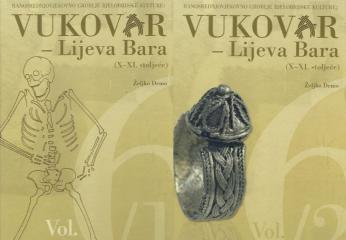Željko Demo
Željko Demo was born in 1951 in Zagreb. After graduating from the Classical High School in 1970, he enrolled in archeology (A) and Latin language (B) at the Faculty of Philosophy in Zagreb. Already during his studies, along with other professors, he was influenced by Duje Rendić-Miočević, who introduced him to numismatics, which he will choose as a topic for his graduation thesis ("Money of Germanic rulers from the second half of the 5th to the second half of the 6th century in the numismatic collection Archaeological Museum in Zagreb"). During his studies, archaeological research in 1974 in Privlaka near Vinkovci under the guidance of Marija Šmalcelj was his introduction to medieval archeology, which would be his professional interest for 37 years at the Archaeological Museum in Zagreb.
Professionally curious and systematic, motivated by an interesting find from northwestern Croatia, he began to create a typology of Bjelobrd two-part pendants. When creating the typology, he researched the medieval site of Lijeva bara in Vukovar, while also using the Expert Archive of Archaeological Sites of the Archaeological Museum in Zagreb, which is an important source of data from older colleagues who have more or less systematically, starting with Marcel Gorenc, since the fifties of the 20th century. century explored the mentioned site. Years of research, as well as digitization of inventory data and field documentation about the Lijeva bara site, gave rise to the exhibition "Vukovar - Lijeva bara: history of an archaeological site (traces, research, signs)" which was presented in the Archaeological Museum in Zagreb in 1996. The success of the exhibition and the compiled overall documentation launched a new series of catalogs of museum collections and holdings "Musei Archaeologici Zagrabiensis Catalogi et Monographiae". The 2009 edition entitled "Early Medieval Cemetery of Bjelobrd culture: Vukovar - Lijeva Bara (10th-11th century)" was authored by Željko Demo, compiling on more than six pages the work of all his predecessors, as well as the findings of the Bjelobrd cultural complex and one of the of the largest known medieval cemeteries in Croatia.
Titles in our offer
Vukovar – Lijeva Bara (X-XI. stoljeće): Ranosrednjovjekovno groblje bjelobrdske kulture I-II
The monograph includes, in addition to numerous pictures in the text, a plan of the cemetery, 434 drawings and 350 photographs of skeletons and 191 drawings of grave finds, more than 100 tabular representations and more than 50 typological drawings and ma
